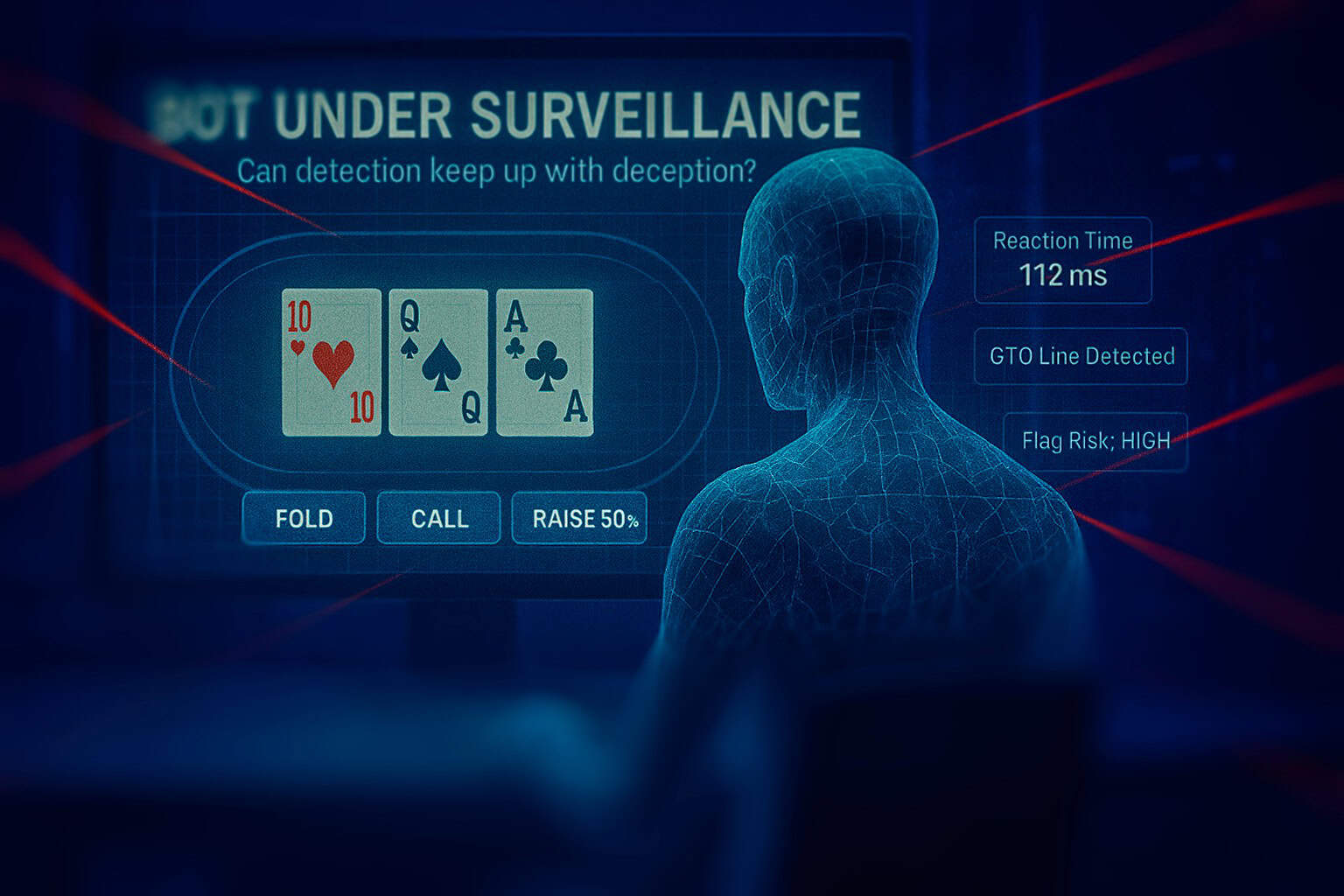
Can Poker Bots Be Stopped? Reviewing Detection Tools
It’s the question haunting both poker operators and players alike:
Can poker bots really be stopped?
With artificial intelligence becoming more accessible and more sophisticated, the line between human and machine play is blurring fast. Online poker sites are in a constant arms race to detect, deter, and ban poker bots—but how effective are their tools?
Let’s break down what we know about poker bot detection in 2025—from basic heuristics to advanced AI detection systems—and whether these tools are up to the task.
Why Bots Are a Threat to Online Poker
First, a reality check.
Poker bots aren’t just curiosities anymore—they’re real threats. Especially in:
- Low to mid stakes cash games
- SNGs and MTTs with predictable structures
- Play-money tables (yes, even here)
With tools like Pluribus Poker, PokerAlfie, and underground AI poker bots becoming easier to customize, even average users can set up semi-decent automation with decent win rates.
That erodes game integrity, scares off recreational players, and forces regulars to battle against cold, calculated software.
Which is why detection systems matter now more than ever.
The Core Types of Poker Bot Detection
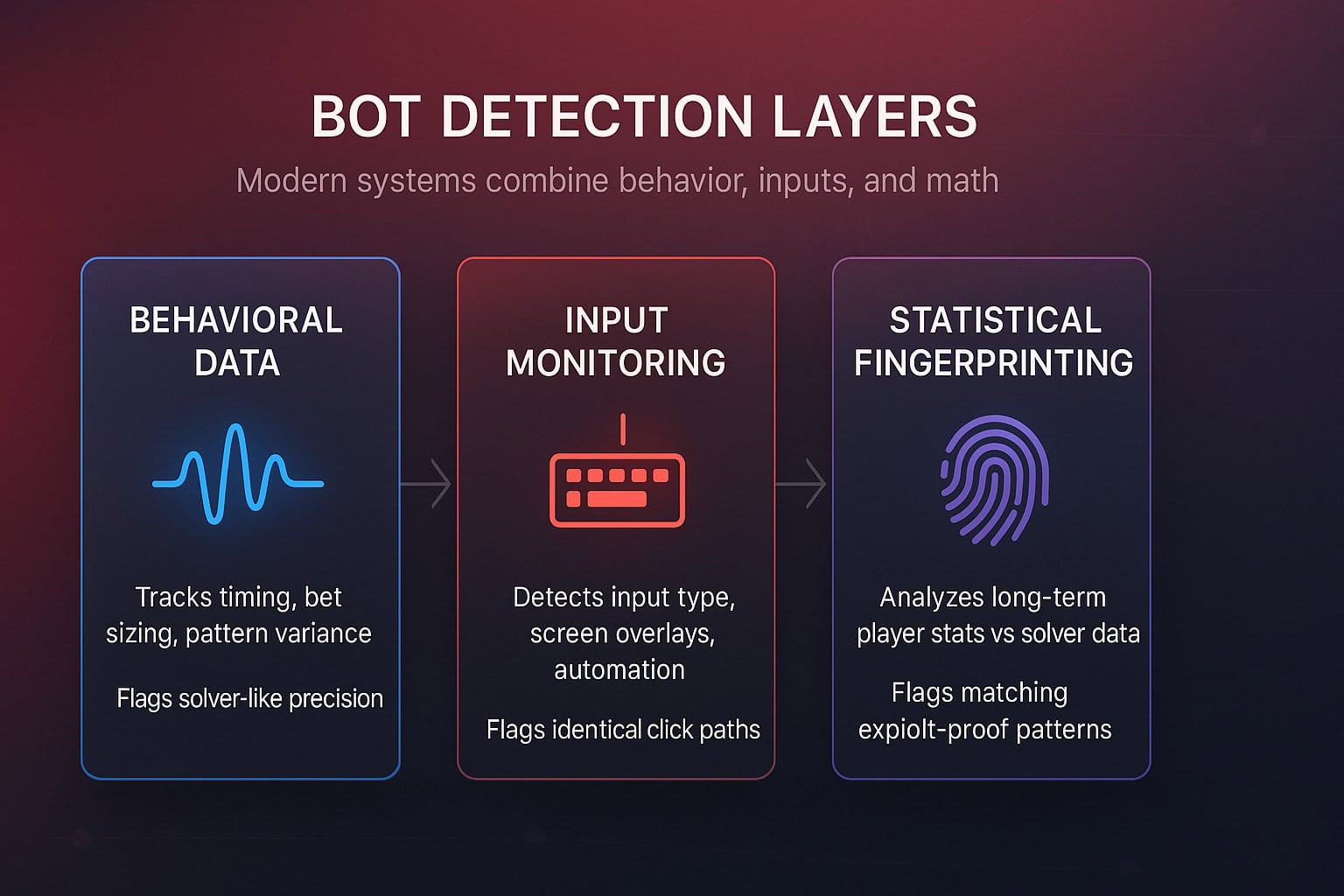
Modern poker sites use a mix of poker bot detection methods to catch automation and maintain fair play.
- Behavioral Analysis
Most bots don’t make “human mistakes.” That’s actually a red flag. Behavioral poker bot detection looks for timing, patterns, and decision-making consistency that differ from normal human play.
Detection tools track:
- Perfect timing
- Unusual frequency of certain actions (e.g. check-raise on specific boards)
- Lack of variance in decision speed
- Repetitive line usage
Bots that never hesitate? Suspicious.
Bots that use “solver lines” with mechanical precision? Even more so.
- Input Device Monitoring
Many poker clients now monitor how you interact with the software:
- Do you click or use hotkeys?
- Do you tab out frequently?
- Are you using an overlay or screen-capture tool?
Invasive? Maybe. But legal (under most terms of service).
If you’re running a poker bot via mouse/keyboard simulators, expect to get flagged—especially if the movement patterns look artificial.
- Statistical Fingerprinting
Operators compare your stats to solver outputs and known profiles. This form of poker bot detection focuses on numbers—bet sizes, aggression factors, and solver-like frequencies.
Examples:
- 3-bet frequency vs position
- C-bet sizing distribution
- River aggression factor
If your numbers match GTO outputs too closely, you’re on the radar. Some tools even compare your sessions to “bot clusters” using ML-trained databases.
Commercial Tools & Site-Level Systems
Let’s talk real tech.
These poker bot detection tools are already used by major sites:
GameIntegrity.AI
- Cloud-based platform used by several major sites
- Uses neural nets to identify “non-human betting rhythms”
- Tracks across multiple player pools
SafeGraph Poker Monitor
- Behavioral modeling + device data + HUD usage detection
- Flags for review and human audit
In-House Systems
- PokerStars and GG Network don’t disclose specifics
- But both rely heavily on click timing analysis, input pattern modeling, and cross-account pattern detection
In other words: if you think you’re being clever with screen scraping and keyboard automation… you’re probably already in a database.
Can Bots Still Avoid Detection?
Here’s the uncomfortable truth: yes—some still can.
Advanced poker bots online use:
- Human mimicry models (randomized delays, hesitation timing)
- Partial automation (only postflop or only vs regs)
- Multi-device setups (using phone/tablet for input masking)
- Cloud-based virtual machines that rotate IPs and user behavior
It’s cat and mouse.
But each new detection method makes it harder for bots to hide. The days of simple “download bot poker” solutions working indefinitely? Over.
Are AI Detectors Better Than Humans?
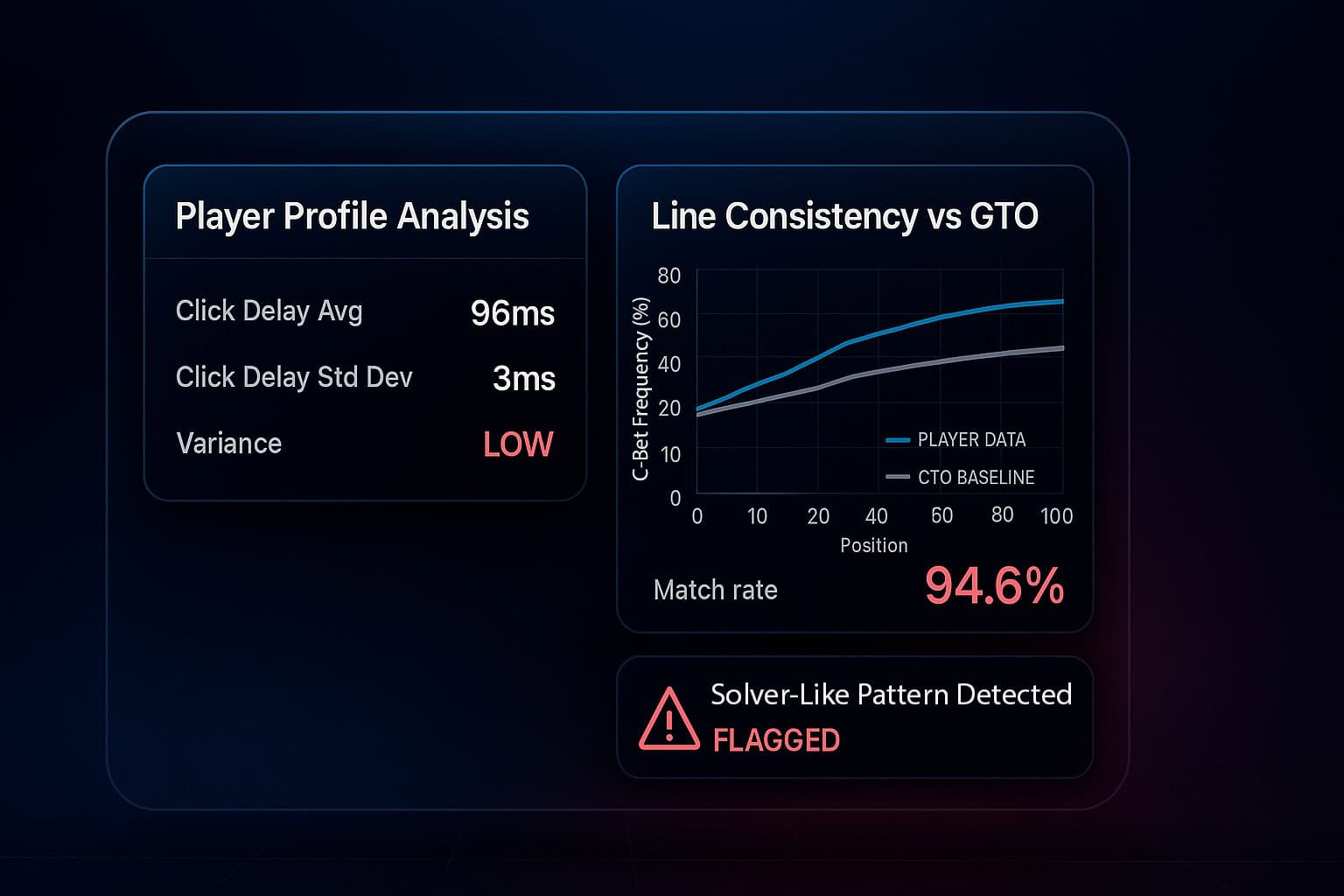
Surprisingly… yes.
Trained moderators miss patterns that machine learning models catch instantly. For example:
- 95% click regularity
- Consistent bluff frequency across 20,000 hands
- Hand-selective solver mimicry (only in tough spots)
Where humans go by gut and feel, AI-based bot detection uses math. And in an industry like poker, math doesn’t lie.
What About False Positives?
It’s a real issue.
Some tools occasionally flag:
- Highly disciplined pros who use GTO tools for study
- Fast multi-tablers
- Players with physical disabilities who use input-assist software
That’s why flag ≠ ban.
Most sites use tiered review systems:
- Detection triggers a red flag
- Human moderation team reviews hands and click data
- Only then is action taken—warning, suspension, or permanent ban
Still, it’s not a perfect system. And innocent players have been caught in the dragnet.
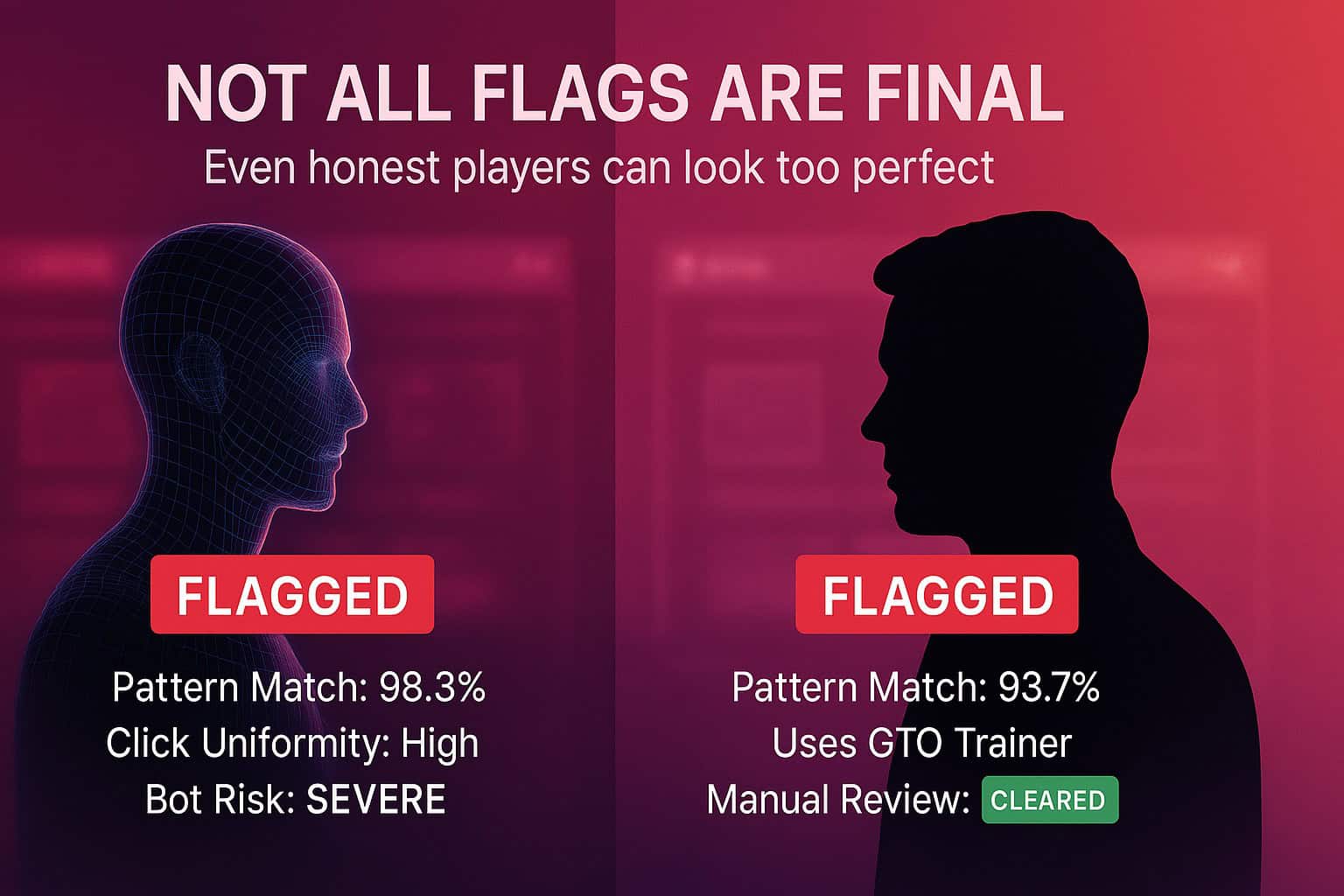
The Future of Poker Bot Detection
Poker bot detection is evolving quickly. Here’s what’s coming next:
AI vs AI
Sites will train their own bots to “pretend to be cheaters” so they can better spot actual bot behavior.
Real-Time Turing Tests
Some clients may begin introducing random in-game prompts to verify human presence (e.g., click here in 4 seconds).
Blockchain Fingerprinting
Some crypto-based sites are exploring identity-linked wallets for additional trust layers.
The goal isn’t just detection—it’s deterrence. Make it too expensive or time-consuming to bot, and the edge fades.
Should Players Worry About Bots in 2025?
If you play:
- Low-stakes cash
- Anonymous tables
- Non-major sites
Then yes—there’s still risk.
But on top-tier regulated rooms, bots are hunted aggressively. If anything, you should worry more about collusion and RTA than full automation.
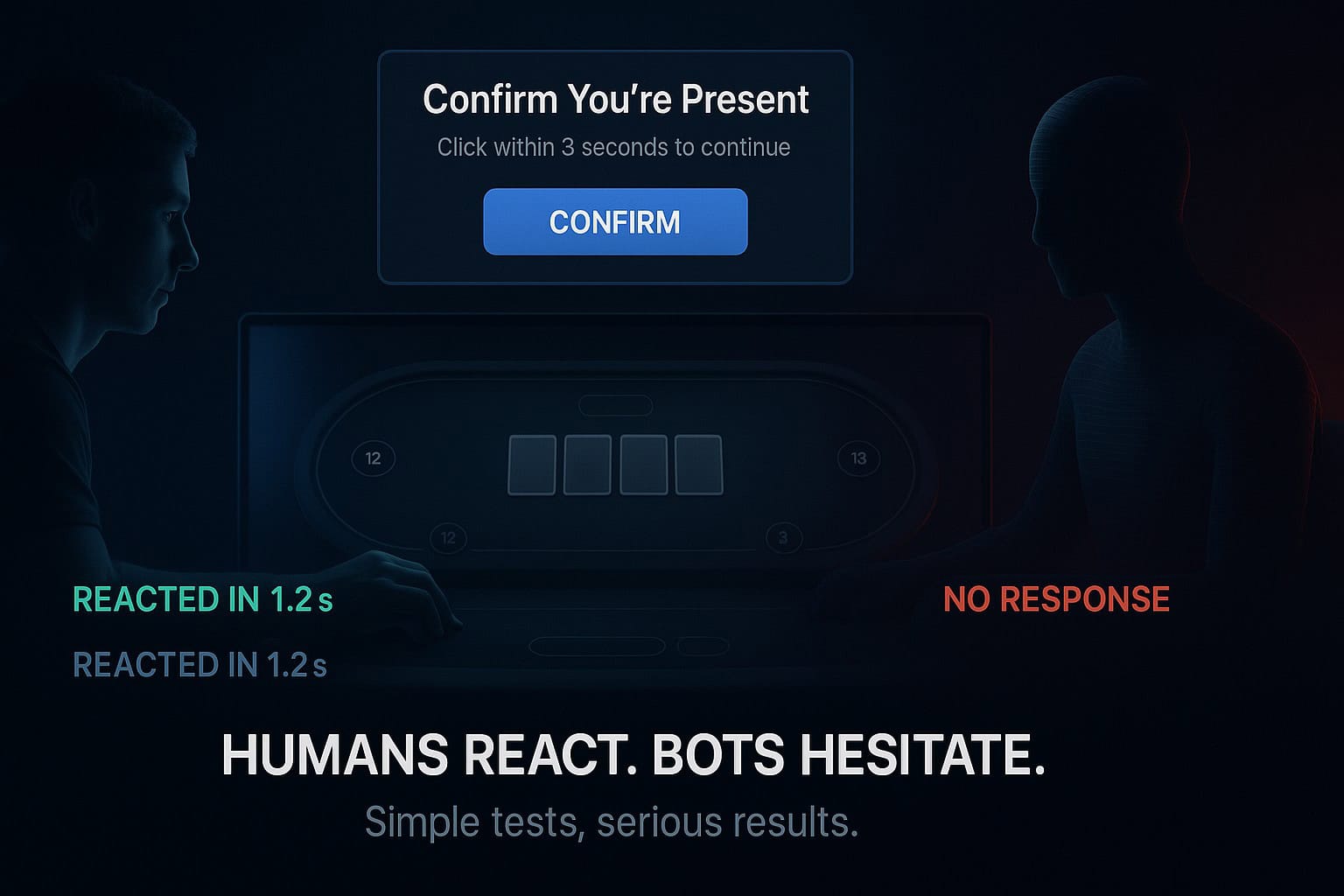
Final Thought: Can Bots Be Stopped?
Not entirely.
But they can be contained. Strong poker bot detection systems reduce risks and keep online games sustainable.
And the best detection tools are only getting better.
The best thing a player can do?
- Stay informed.
- Report suspicious patterns.
- Avoid using any questionable software—even if it’s just for “practice.”
Poker has always been a game of skill. Let’s keep it that way.
